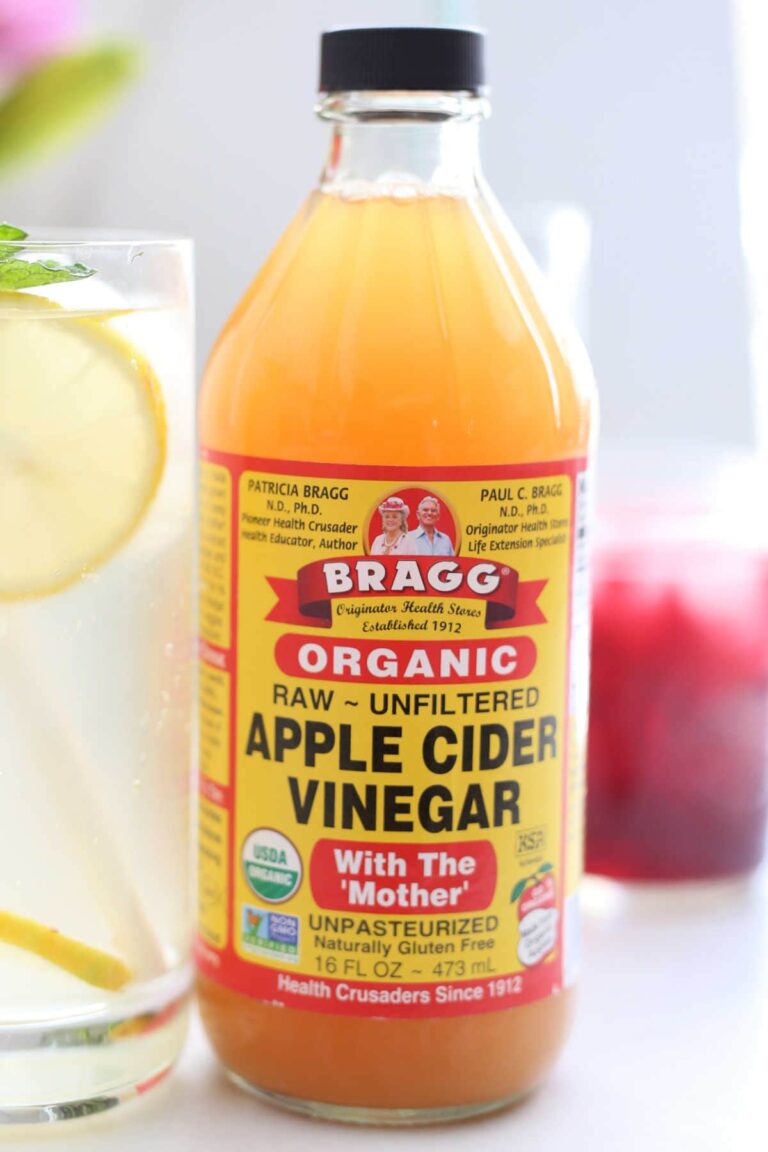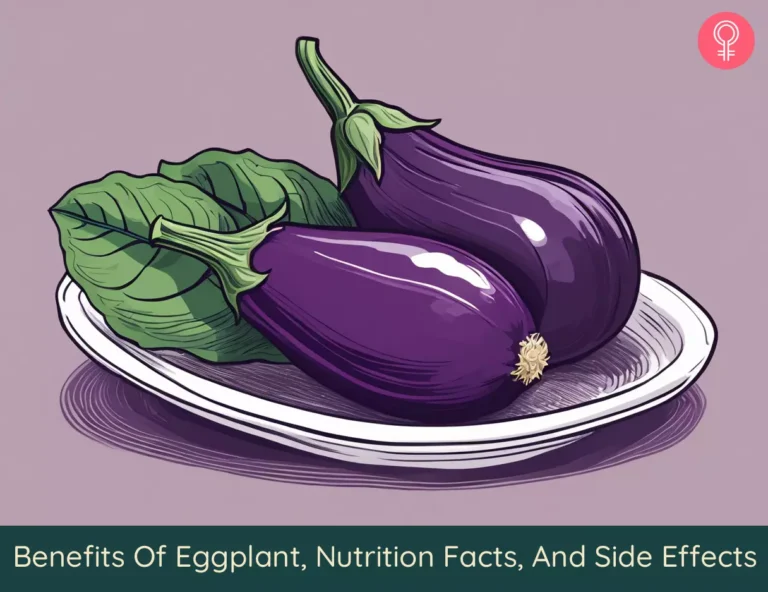Feed Your Flora: The Kimchi Guide to Superior Gut Health
In the bustling tapestry of human health, there exists a hidden, vibrant universe—the gut microbiome. This intricate ecosystem, teeming with trillions of microorganisms, orchestrates processes far beyond mere digestion, influencing everything from our immune system and metabolic health to our mood and cognitive function. For too long, this inner world remained largely unexplored, a silent partner in our well-being. But as modern science illuminates its profound impact, humanity is rediscovering ancient wisdom, turning to time-honored traditions that instinctively nurtured this vital flora. Among these, one fermented marvel stands out: kimchi, the spicy, tangy, and endlessly complex cornerstone of Korean cuisine.
This isn’t merely a guide to a condiment; it’s an invitation to embark on a culinary and biological journey, a deep dive into how a humble dish, born from necessity and perfected over millennia, can become a powerful ally in the pursuit of superior gut health. Prepare to unravel the science, savor the history, and empower yourself with the knowledge to feed your flora, one delicious, probiotic-rich bite at a time.
The Microbiome: An Inner Universe and the Architect of Well-being
To truly appreciate the power of kimchi, we must first understand the landscape it seeks to cultivate. The human gut, specifically the large intestine, is home to an astonishing array of bacteria, archaea, fungi, and viruses—collectively known as the gut microbiota. This microbial metropolis, weighing as much as a human brain, boasts a genetic diversity that dwarfs our own, containing millions of unique genes compared to the mere 20,000-25,000 in the human genome. It’s a symbiotic ecosystem, where we provide a warm, nutrient-rich home, and in return, our microscopic tenants perform indispensable services.
The Multifaceted Roles of Our Gut Flora:
- Digestion and Nutrient Absorption: Beyond simply breaking down food, gut bacteria ferment indigestible fibers, producing short-chain fatty acids (SCFAs) like butyrate, acetate, and propionate, which are crucial energy sources for our colon cells and have far-reaching systemic effects. They also synthesize essential vitamins, including B vitamins (B12, folate, biotin) and vitamin K.
- Immune System Modulation: A staggering 70-80% of our immune cells reside in the gut-associated lymphoid tissue (GALT). The microbiome acts as a constant educator and regulator for these cells, distinguishing between harmless food particles, beneficial microbes, and harmful pathogens. A diverse and balanced microbiome trains the immune system to respond appropriately, preventing overreactions (allergies, autoimmune diseases) and under-reactions (susceptibility to infections).
- Gut Barrier Integrity: The gut lining, a single layer of epithelial cells, forms a critical barrier protecting our bloodstream from toxins and undigested food particles. A healthy microbiome strengthens this barrier by producing mucin and SCFAs, which nourish the epithelial cells and tighten the "tight junctions" between them, preventing "leaky gut" syndrome.
- Brain-Gut Axis Communication: Often called the "second brain," the gut communicates constantly with the central nervous system via the vagus nerve, neurotransmitters, and microbial metabolites. Gut bacteria produce a vast array of neuroactive compounds, including serotonin (a key mood regulator, 90% of which is produced in the gut), GABA (an inhibitory neurotransmitter), and dopamine precursors. This intricate communication impacts mood, stress response, anxiety, depression, and even cognitive function.
- Metabolic Regulation: The microbiome influences how we store fat, balance blood sugar, and respond to insulin. Certain microbial compositions are associated with increased risk of obesity, type 2 diabetes, and metabolic syndrome, while a healthy flora can enhance insulin sensitivity and promote healthy weight management.
Dysbiosis: When the Balance is Broken:
When this delicate microbial balance is disrupted—a state known as dysbiosis—the consequences can be profound. Factors like poor diet (high in processed foods, low in fiber), antibiotic use, chronic stress, environmental toxins, and lack of sleep can decimate beneficial bacteria, allowing pathogenic species to flourish. This imbalance is implicated in a wide spectrum of modern ailments, including:
- Inflammatory Bowel Disease (IBD) and Irritable Bowel Syndrome (IBS)
- Autoimmune conditions (e.g., rheumatoid arthritis, multiple sclerosis)
- Allergies and asthma
- Obesity and metabolic disorders
- Anxiety, depression, and neurodegenerative diseases
- Increased susceptibility to infections
The imperative, then, is clear: to cultivate and nourish this inner garden. And for this, we turn to the ancient art of fermentation, exemplified perfectly by kimchi.
Kimchi: A Culinary Time Capsule of Health
From the frigid winters of ancient Korea, where preserving vegetables was a matter of survival, emerged kimchi. More than just a dish, it’s a cultural icon, a testament to ingenuity, and a living repository of beneficial microbes. Its history stretches back thousands of years, evolving from simple salted vegetables to the complex, spicy, and deeply flavored staple we know today. Every Korean family has its own recipe, passed down through generations, reflecting regional variations and personal touches.
The Anatomy of Authentic Kimchi:
While countless variations exist, the foundational elements of traditional kimchi create a symphony of flavors and a powerhouse of nutrients:
- Napa Cabbage (Baechu): The undisputed star, providing the fibrous matrix for fermentation. It’s rich in vitamins C and K, as well as glucosinolates, compounds that, when broken down, have potent antioxidant and anti-cancer properties.
- Korean Radish (Moo) or Daikon: Adds a refreshing crunch and subtle sweetness, contributing additional fiber and vitamins.
- Gochugaru (Korean Chili Powder): The heart of kimchi’s signature spice and vibrant red hue. Gochugaru is rich in capsaicin (known for its anti-inflammatory and pain-relieving effects) and powerful antioxidants like carotenoids.
- Garlic: A non-negotiable ingredient, garlic is a potent source of allicin, an organosulfur compound with antimicrobial, anti-inflammatory, and immune-boosting properties.
- Ginger: Adds a pungent, warming note and brings its own arsenal of gingerols, known for their anti-inflammatory and digestive benefits.
- Scallions/Green Onions: Provide a fresh, oniony bite and additional nutrients.
- Fish Sauce (Aekjeot) or Salted Shrimp (Saeujeot): These fermented seafood products are crucial for umami depth and provide a natural source of amino acids. For vegan versions, mushroom broth or soy sauce can be used as alternatives.
- Salt: Essential for the initial brining process, drawing out water, inhibiting spoilage organisms, and setting the stage for lactic acid bacteria to thrive.
- Rice Flour Porridge (Optional): Often added to thicken the paste and provide a food source for the fermenting bacteria.
The magic truly begins after these ingredients are combined. The salted vegetables, coated in the spicy paste, are left to ferment. This isn’t spoilage; it’s a controlled transformation, a microbial alchemy orchestrated primarily by lactic acid bacteria (LAB).
The Microbial Symphony: What Makes Kimchi So Potent?
Kimchi’s profound impact on gut health stems from a powerful synergy of its components: it’s a living food, brimming with probiotics, rich in prebiotics, and a natural factory for beneficial postbiotics, all encapsulated within a matrix of potent bioactive compounds.
1. Probiotics: The Living Workforce
The fermentation process in kimchi is dominated by various species of lactic acid bacteria (LAB), including Lactobacillus plantarum, L. brevis, L. sakei, Leuconostoc mesenteroides, and Weissella koreensis. These are the rockstars of gut health, and their presence in kimchi provides several key benefits:
- Populating the Gut: When consumed, these live microorganisms navigate the digestive tract, with many successfully reaching the large intestine where they can temporarily colonize and exert their effects.
- Competitive Exclusion: Probiotic bacteria compete with harmful pathogens for nutrients and attachment sites on the gut lining, effectively "crowding out" undesirable microbes.
- Production of Antimicrobial Substances: Many LAB strains produce bacteriocins, short peptides that act as natural antibiotics, inhibiting the growth of pathogenic bacteria. They also produce lactic acid, acetic acid, and hydrogen peroxide, further creating an environment unfavorable for pathogens.
- Enhancing Gut Barrier Function: Probiotics strengthen the intestinal barrier, reducing permeability and preventing the leakage of toxins into the bloodstream. They stimulate mucin production, which forms a protective layer, and can directly influence the integrity of tight junctions.
- Modulating the Immune System: Probiotics interact with immune cells in the gut, helping to regulate immune responses, reduce inflammation, and enhance the body’s defense mechanisms against infections.
- Aiding Digestion: They assist in breaking down complex carbohydrates and proteins, making nutrients more accessible and reducing digestive discomfort.
Crucially, the diversity of strains found in traditional, unpasteurized kimchi is often superior to many commercial probiotic supplements, offering a broader spectrum of benefits.
2. Prebiotics: Fuel for the Flora
Kimchi isn’t just about adding beneficial bacteria; it’s also about feeding the ones already there. The fibrous vegetables—napa cabbage, radish, scallions, garlic, ginger—act as prebiotics.
- What are Prebiotics? They are non-digestible food ingredients that selectively stimulate the growth and activity of beneficial bacteria in the colon. Think of them as fertilizer for your gut garden.
- Kimchi’s Prebiotic Power: The complex carbohydrates and fibers in the vegetables pass undigested into the large intestine, where they become a primary food source for Lactobacillus, Bifidobacterium, and other health-promoting gut microbes.
- Boosting SCFA Production: When these prebiotics are fermented by gut bacteria, they produce short-chain fatty acids (SCFAs), which are critical for gut health and systemic well-being.
3. Postbiotics: The Metabolic Byproducts
While probiotics are the live organisms and prebiotics are their food, postbiotics are the beneficial metabolic byproducts produced by the fermentation process and by the gut bacteria themselves. These often overlooked compounds are increasingly recognized for their profound health effects.
- Short-Chain Fatty Acids (SCFAs): The most significant postbiotics in kimchi. Lactic acid bacteria produce lactic acid during fermentation, and once consumed, the prebiotics are further fermented in the gut to produce butyrate, acetate, and propionate.
- Butyrate: This is the superstar SCFA. It’s the primary fuel source for colonocytes (cells lining the colon), vital for maintaining the integrity of the gut barrier. Butyrate also possesses potent anti-inflammatory properties, can regulate gene expression, and has been linked to improved insulin sensitivity and protection against colorectal cancer.
- Acetate and Propionate: These SCFAs contribute to overall gut health, energy metabolism, and can have systemic effects, including satiety signaling and impact on liver function.
- Other Postbiotics: Kimchi also contains various enzymes, peptides, and organic acids formed during fermentation, all contributing to its therapeutic potential.
4. Bioactive Compounds: The Antioxidant and Anti-inflammatory Army
Beyond the microbial magic, the raw ingredients of kimchi bring their own powerful contributions:
- Antioxidants: Gochugaru (capsaicin, carotenoids), garlic (allicin), and ginger (gingerols) are packed with antioxidants that combat oxidative stress, a key driver of inflammation and chronic disease. These compounds help neutralize free radicals, protecting cells from damage.
- Vitamins: Kimchi is a good source of Vitamin C (from cabbage and chili), Vitamin K (from fermentation), and various B vitamins (especially B12 in some fermented products, though vegan kimchi might not be a primary source, it often enhances the absorption of other B vitamins).
- Minerals: It provides minerals like calcium, iron, and potassium.
- Glucosinolates: Found in cruciferous vegetables like cabbage, these compounds are converted into isothiocyanates during digestion, which are known for their anti-cancer properties and detoxification support.
The true genius of kimchi lies in this synergy. It’s not just a probiotic supplement; it’s a whole food matrix where probiotics, prebiotics, postbiotics, and a rich array of plant-based nutrients work in concert, creating an effect far greater than the sum of its parts.
Beyond the Gut: A Holistic Health Elixir
The benefits of a well-fed flora, fueled by a food like kimchi, ripple far beyond the confines of the digestive tract, touching almost every system in the body.
1. Robust Immune System Modulation
As discussed, the gut is the primary site of immune activity. By fostering a diverse and balanced microbiome, kimchi directly strengthens the immune system:
- Enhanced Pathogen Defense: The beneficial bacteria create a hostile environment for invaders and stimulate the production of antibodies like IgA, which coats the gut lining and neutralizes pathogens.
- Reduced Inflammation: Chronic low-grade inflammation is at the root of many chronic diseases. SCFAs, particularly butyrate, and various probiotic strains have potent anti-inflammatory effects, helping to dampen systemic inflammation.
- Allergy and Autoimmune Support: A balanced microbiome helps educate the immune system, potentially reducing hypersensitivity reactions (allergies) and preventing the immune system from mistakenly attacking the body’s own tissues (autoimmunity).
2. Mental Well-being and the Brain-Gut Axis
The intimate connection between the gut and brain means that feeding your flora has a direct impact on your mental state.
- Neurotransmitter Production: Gut bacteria produce a significant portion of the body’s serotonin, a key neurotransmitter regulating mood, sleep, and appetite. They also produce GABA, which has calming effects, and influence dopamine pathways.
- Stress Reduction: A healthy microbiome can modulate the body’s stress response system (HPA axis), reducing cortisol levels and mitigating the physiological effects of stress.
- Improved Mood and Cognitive Function: Studies are increasingly linking gut dysbiosis to anxiety, depression, and even neurodegenerative conditions. By nurturing a healthy gut, kimchi can contribute to improved mood, reduced anxiety, and potentially sharper cognitive function. The vagus nerve acts as a superhighway for these communications, and a healthy gut sends positive signals to the brain.
3. Metabolic Health and Weight Management
The microbiome plays a crucial role in how our bodies process food and store energy.
- Improved Insulin Sensitivity: A balanced gut flora can enhance the body’s sensitivity to insulin, which is vital for maintaining stable blood sugar levels and preventing type 2 diabetes.
- Fat Storage Regulation: Certain microbial profiles are associated with increased fat storage and obesity. By promoting beneficial bacteria, kimchi can help regulate metabolic pathways and potentially support healthy weight management.
- Increased Satiety: SCFAs can influence appetite-regulating hormones, potentially contributing to a feeling of fullness and reducing caloric intake.
4. Anti-inflammatory and Antioxidant Powerhouse
The combined effect of probiotics, prebiotics, and the bioactive compounds in kimchi creates a formidable defense against inflammation and oxidative stress.
- Combating Free Radicals: The abundant antioxidants (capsaicin, allicin, gingerols, carotenoids) directly scavenge free radicals, protecting cellular structures from damage and slowing down aging processes.
- Systemic Anti-inflammatory Effects: Beyond the gut, the anti-inflammatory compounds and SCFA production can help reduce inflammation throughout the body, offering protection against a wide range of chronic diseases.
In essence, embracing kimchi is not just about adding a food to your diet; it’s about adopting a lifestyle choice that profoundly impacts your entire physiological landscape, promoting resilience, balance, and vitality from the inside out.
The Art and Science of Kimchi Fermentation: A Practical Journey
Integrating kimchi into your life can be as simple as buying a jar or as rewarding as making it yourself. For the knowledgeable audience, understanding the process deepens appreciation and ensures optimal benefit.
Making Your Own: A Ritual of Nourishment
Crafting your own kimchi is a deeply satisfying experience, allowing you to control ingredients, spice levels, and the fermentation process.
Essential Ingredients (for a basic batch):
- 1 large head (2-3 kg) Napa cabbage
- 1 cup coarse sea salt (non-iodized)
- For the paste:
- 1/2 cup gochugaru (adjust to taste)
- 1/4 cup minced garlic
- 2 tbsp minced ginger
- 1/4 cup fish sauce (or vegan alternative like mushroom broth/soy sauce)
- 2 tbsp sugar or other sweetener (helps feed bacteria)
- 1/4 cup sweet rice flour porridge (optional, made by boiling 1 tbsp rice flour with 1/4 cup water)
- Optional additions: julienned daikon radish, carrots, scallions, Asian pear, onion.
The Process: A Step-by-Step Guide:
- Salt the Cabbage:
- Cut cabbage lengthwise into quarters, then chop into 2-inch pieces.
- Rinse well, then place in a large bowl. Sprinkle generously with coarse salt, ensuring salt gets between the leaves.
- Massage the salt into the cabbage. Add enough water to cover the cabbage.
- Let sit for 2-3 hours, flipping every 30-60 minutes, until the cabbage is softened and pliable. This step draws out water and helps inhibit unwanted bacteria.
- Rinse and Drain:
- Thoroughly rinse the cabbage under cold running water 2-3 times to remove excess salt. Squeeze gently to remove as much water as possible without bruising. Taste a piece—it should be pleasantly salty, not overwhelmingly so.
- Prepare the Kimchi Paste:
- While the cabbage is salting, prepare the paste. In a large bowl, combine gochugaru, minced garlic, minced ginger, fish sauce (or alternative), sugar, and sweet rice flour porridge (if using). Mix thoroughly until a thick paste forms. Add other optional vegetables now.
- Combine and Coat:
- Add the rinsed and drained cabbage to the bowl with the kimchi paste.
- Wearing food-safe gloves (essential to protect your hands from chili and prevent contamination), thoroughly massage the paste into the cabbage, ensuring every piece is evenly coated.
- Pack and Ferment:
- Firmly pack the kimchi into clean, sterilized glass jars or a fermentation crock, pressing down to remove air pockets. Leave about an inch of headspace.
- Ensure the cabbage is submerged under its own liquid (you can use a fermentation weight if needed). This creates an anaerobic environment crucial for lactic acid fermentation.
- Seal the jars with an airlock lid or a regular lid that can be "burped" daily to release gases.
- Fermentation: Store at room temperature (ideally 18-22°C / 65-72°F) for 1-5 days. The exact time depends on the temperature and your preference for tanginess.
- Taste Test: Begin tasting after 1-2 days. You’ll notice bubbles forming, indicating active fermentation. It should smell pleasantly sour, not putrid.
- Refrigerate: Once it reaches your desired level of sourness, transfer the kimchi to the refrigerator. Fermentation will slow down significantly, allowing it to age and develop deeper flavors over weeks or even months.
Troubleshooting & Tips:
- Mold: If you see any fuzzy mold, discard the batch. This usually happens if the kimchi isn’t fully submerged or if jars aren’t clean.
- Too Salty: Rinse the cabbage more thoroughly.
- Not Fermenting: Ensure your room isn’t too cold. A small amount of sugar in the paste can kickstart fermentation.
- Consistency: The key to good kimchi is patience and attention to detail, especially during the salting and packing phases.
Buying Kimchi: What to Look For
If making your own isn’t feasible, purchasing high-quality kimchi is an excellent option.
- "Raw" and "Unpasteurized": These terms are crucial. Pasteurization involves heat treatment that kills the beneficial bacteria, rendering the kimchi a dead food in terms of probiotic content. Look for "live cultures" or "unpasteurized" on the label.
- Refrigerated Section: Authentic, live kimchi will always be sold in the refrigerated section of the grocery store. Shelf-stable kimchi has been pasteurized.
- Ingredients List: Opt for brands with simple, natural ingredients. Avoid artificial colors, flavors, or excessive preservatives.
- Glass Jars: While not a deal-breaker, glass jars are often preferred as they don’t leach chemicals and allow you to see the product.
- Reputable Brands: Seek out brands known for traditional methods. Many Asian markets will carry excellent local or imported options.
Incorporating Kimchi into Your Daily Diet
Kimchi is incredibly versatile and can be enjoyed in countless ways beyond a simple side dish. Consistency is key to nurturing your flora. Aim for a small serving (1/4 to 1/2 cup) daily.
- Classic Side Dish: The most traditional way, served alongside any meal.
- Kimchi Fried Rice (Kimchi Bokkeumbap): Sauté with rice, vegetables, and often an egg.
- Kimchi Stew (Kimchi Jjigae): A hearty, warming stew with tofu, pork (or mushrooms), and vegetables.
- Kimchi Pancakes (Kimchijeon): Savory pancakes mixed with chopped kimchi.
- Toppings: Add to scrambled eggs, avocado toast, tacos, burgers, hot dogs, or grain bowls.
- Salad Component: Mix into salads for a tangy, spicy kick.
- Marinades: Use the liquid or finely chopped kimchi to marinate meats or vegetables.
- Sandwiches and Wraps: A fantastic addition for crunch and flavor.
The goal is to make kimchi a regular, enjoyable part of your dietary rhythm, allowing its living cultures and potent compounds to consistently nourish your inner ecosystem.
Navigating the Kimchi Path: Considerations and Nuances
While kimchi is a powerhouse of health benefits, a knowledgeable approach includes understanding its potential nuances.
- Sodium Content: Traditional kimchi can be high in sodium due to the brining process. If you have concerns about sodium intake, you can rinse store-bought kimchi before eating (though this will wash away some flavor and beneficial liquid) or make your own with reduced salt. Balance it with other low-sodium foods in your diet.
- Spiciness: Gochugaru provides a significant kick. If you’re sensitive to spice, look for mild versions or start with a very small amount. When making your own, adjust the gochugaru to your preference.
- Individual Responses: Like all fermented foods, individual responses can vary. Some people, especially those new to fermented foods or with a severely compromised gut, might experience mild digestive upset (gas, bloating) initially as their microbiome adjusts. Start with small servings (1-2 tablespoons) and gradually increase.
- Consistency is Key: The benefits of probiotics and prebiotics are not a one-time fix. They require consistent input to maintain a thriving, diverse microbiome. Integrate kimchi regularly, alongside a diet rich in whole, plant-based foods.
- The "Terroir" of Fermentation: Just as wine has terroir, so does kimchi. The specific strains of bacteria can vary based on ingredients, environment, and fermentation time. Embrace this diversity; different batches and brands will offer slightly different microbial profiles.
Embracing kimchi is a step towards a more conscious relationship with your food and your body. It’s a recognition that health is an inside job, deeply intertwined with the microscopic world within us.
Conclusion: The Future of Our Flora
The journey from a humble head of cabbage to a vibrant, probiotic-rich superfood is a testament to human ingenuity and the profound power of nature. Kimchi, with its deep historical roots and compelling scientific backing, stands as a delicious bridge between ancient wisdom and modern health imperatives. It’s a reminder that true nourishment often comes not from isolated supplements or fleeting trends, but from whole, living foods that have sustained civilizations for centuries.
By choosing to "Feed Your Flora" with kimchi, you are not merely adding a piquant flavor to your plate; you are actively cultivating a healthier inner landscape. You are bolstering your immune system, enhancing your mental clarity, optimizing your metabolism, and laying a foundation for long-term vitality. This isn’t just about avoiding illness; it’s about embracing a more vibrant, resilient, and connected existence.
The story of the microbiome is still being written, but its central message is clear: we are never alone. Trillions of tiny allies work tirelessly within us, and it is our privilege and responsibility to nurture them. So, reach for that jar of crimson goodness, embark on your own kimchi journey, and savor the profound transformation that awaits when you truly feed your flora. Your gut, and indeed your entire being, will thank you.






